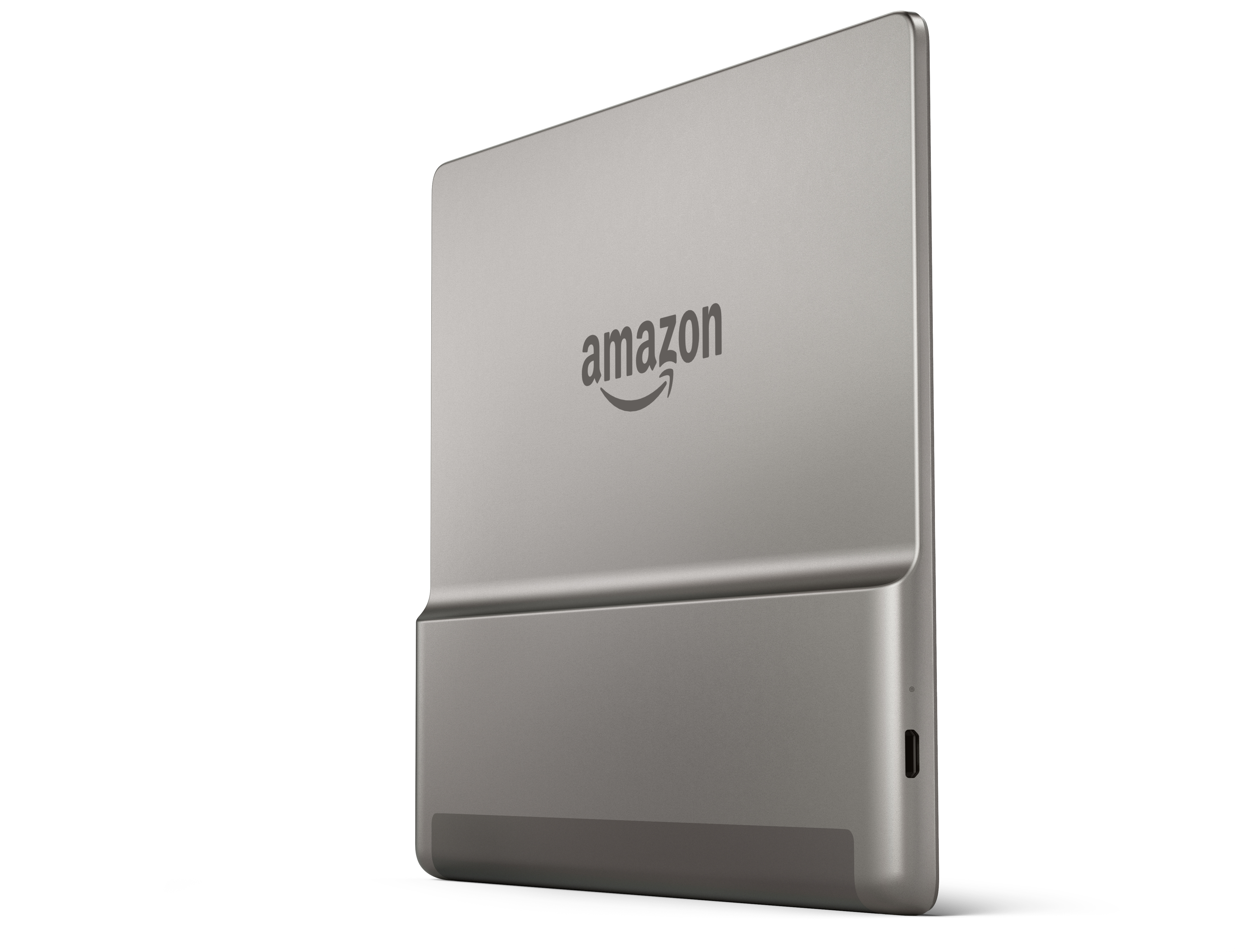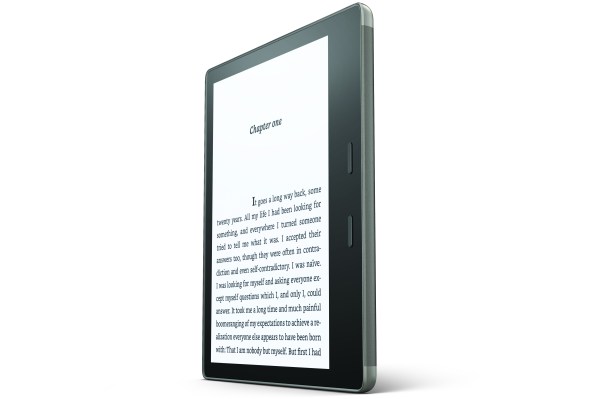We had some minor heart palpitations the other week when Amazon skipped the Kindle during a deluge of product announcements. But have no fear, the company insists that it’s still committed to its hardware roots — after all (and I was honestly a bit surprised at this revelation), this past Prime Day was apparently the best selling day for Kindles in the U.S. and the world. The Kindle oversight was due to the fact that the “event was focused on Alexa.”
The company is celebrating the line’s upcoming 10th anniversary (November 19) a month or so early with an update to the high-end Kindle Oasis. The new Kindle is the first to get waterproofing, rating at IP8 for trips to the beach and bath tub reading (a feature Kobo has offered for a couple of generations now). It also brings Audible playback directly to the device courtesy of Bluetooth audio.
The upgrade comes roughly a year-and-a-half after the first Oasis marked the company’s recommitment to the line. As the most premium Kindle reader, the device is targeted at a relatively narrow band of consumers — those who want an essentially single-function device with a premium build. And are willing to pay for it. The new Oasis starts at $249 and goes up from there.
That price gets you the company’s highest resolution screen (300 PPI), this time in a seven-inch form factor. That’s a full inch larger than the default e-reader screen size the company seemingly settled on generations ago. Sure, it’s flirted with larger screens, most notably with the massive Kindle DX, but six inches has always been the sweet spot for both Amazon and much of the competition.
Of course, the perks of a larger screen are pretty clear right off the bat. You get 30 percent more text on the page at a time, which means fewer page turns. It also has a marked advantage when attempting to read image-heavy works, like comics, on the thing (though comics on an e-reader is still a big no-go, as far as I’m concerned). The downside is equally apparent: a larger footprint.

Though Amazon assures me that, thanks to the relative thinness of the device, it’s managed to keep it small enough to slip into the pockets on a pair of pants. That’s always been the sort of benchmark for these products — of course, your individual results will vary, based on whether or not you live in Williamsburg.
The larger surface area also means the battery has more space to spread out — though the company has once again decided to go with that unsightly battery bump on the back. Concentrating the battery in one spot means the weight isn’t very evenly distributed, though it’s positioned so most of the heft rests in the hand, with the battery lip providing a spot where the reader can rest their hands.
The screen is also the brightest Amazon’s offered up. There are 12 LEDs on-board versus 10 in the last version, offering up a more uniform front lighting. The glass is also the strongest the company has offered up — it’s a proprietary equivalent to Gorilla Glass, according to Amazon. All small but nice touches one would expect from the company’s most premium reader.
The physical page turn buttons are back, too — honestly, that’s the thing that probably excited me the most about the original Oasis. Again, it’s a small thing, but I really missed that feature once Barnes & Noble stopped producing the Nook. The device also features an on-board accelerometer, so it automatically switches orientation based on how it’s being held — that’s good news for left-handed readers. It also means you can read with a horizontal orientation, though that’s probably of limited appeal.
Audible playback comes courtesy of on-board Bluetooth. Amazon will also be adding the feature to older Kindles that have wireless connectivity for accessibility reasons, but the new Oasis is getting it first. Users who buy books as a text/audio bundle will be able to use the feature, which uses reading speed to calculate where you left off and switches to that spot in the audiobook title.
There are little tweaks to the software, as well, including more font size gradations and the ability to bold any font. Text alignment can also be adjusted for a “ragged” right side, meaning the text is spaced out to keep the margins nice and tidy. The new Oasis supports Amazon’s proprietary files, along with TXT, PDF, MOBI and PRC. That’s a bummer for someone like me who uses a lot of EPUB files — though no surprise that Amazon’s keeping that on lockdown here, given the importance of its store.
Also, as ever, there’s no expandable memory present, but on-board has been doubled to 8GB and the reader goes up to 32GB. The expansion comes because local storage for Audible files changes the math on capacity considerably. The charging port is still microUSB, but fast charging means a full charge in two hours. That amounts to about six weeks — two weeks down from the last Oasis, but that’s still a lot of reading.
The new Oasis is up for pre-order today and starts shipping on Halloween. Pricing starts at $249, with the LTE-enabled, 32GB version running an additional $100.
